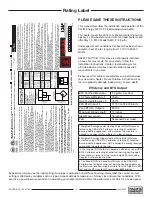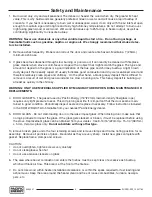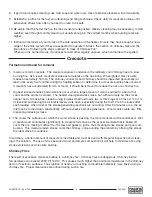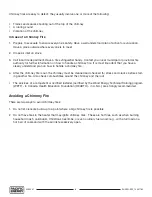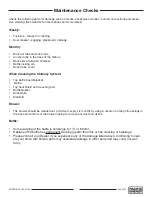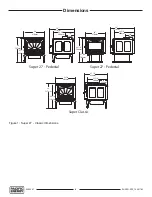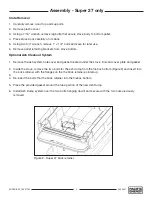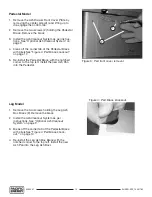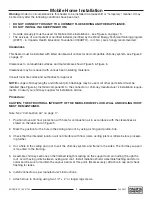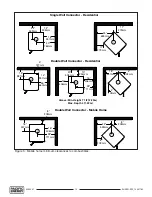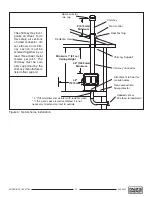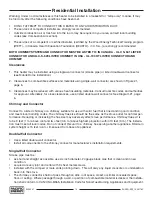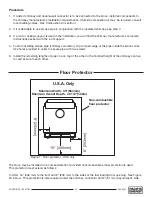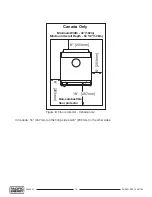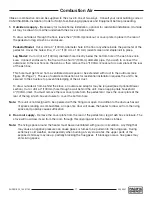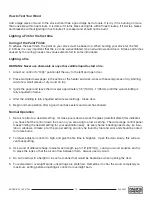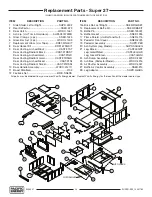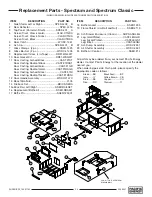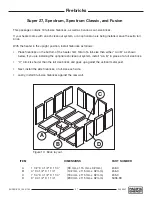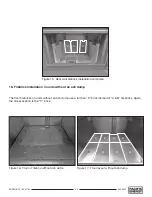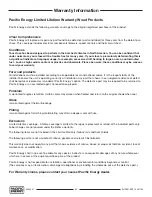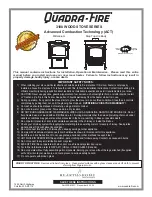
Combustion Air
Intake or combustion air can be supplied to the stove in one of two ways. Consult your local building code or
CAN/CSA-B365, Installation Code for Solid-Fuel-Burning Appliances and Equipment before proceeding.
1. Outside air supply -
(Necessary for mobile home installation, optional for residential installation.) Outside
air may be drawn from either underneath the stove or from behind.
To draw outside air through the floor, leave the 4"(100mm) knockout or cover plate in place in the rear of
the pedestal or leg kit ash box enclosure.
Pedestal Model:
Cut or drill a 4" (100mm) diameter hole in the floor anywhere inside the perimeter of the
pedestal. Cover the hole with a 4" x 4" (100 mm x 100 mm) rodent screen and staple/nail in place.
Leg Model:
Cut or drill a 4"(100mm) diameter hole directly below the bottom hole of the ash box enclo
sure. Connect enclosure to the floor with a short 4"(100mm) diameter pipe. If you wish to connect the
outside air to the rear hole on the ash box, then remove the 4"(100mm) knockout or cover plate at the rear
of the ash box.
This hole must get its air from a ventilated crawl space or be extended with duct to the outdoors (see
Figure #3, Page 7). The use of outside combustion air for residential installation requires the unit to be
secured to the structure to prevent dislodging of the air duct.
To draw outside air from behind the stove, an outside air adaptor may be required (see Optional Blower
section). Cut or drill a 4"(100mm) hole through a wall behind the unit. Use an appropriate household
4"(100mm) inlet. You must remove the rear cover plate from the pedestal or move the cover plate at the
rear of the leg kit ash box enclosure to cover the bottom hole.
Note:
This unit is not designed to be operated with the firing door open. In addition to the obvious hazard
of sparks landing on combustibles, an open fire door will cause the heater to draw air from the living
space and possibly cause suffocation.
2. Room air supply -
Remove the cover plate from the rear of the pedestal or leg kit ash box enclosure. The
stove will now draw its air from the room through this opening and into the firebox intake.
Note:
The living space around the heater must be well ventilated with good air circulation. Anything that
may cause a negative pressure can cause gases or fumes to be pulled into the living area. During
extremely cold weather, and especially when burning at very slow rates, the upper parts of the
exposed chimney may ice up, partially blocking the flue gases. If blockage occurs, flue gases may
enter living space.
SUPER-SD1_100517-32
17
5055.201

